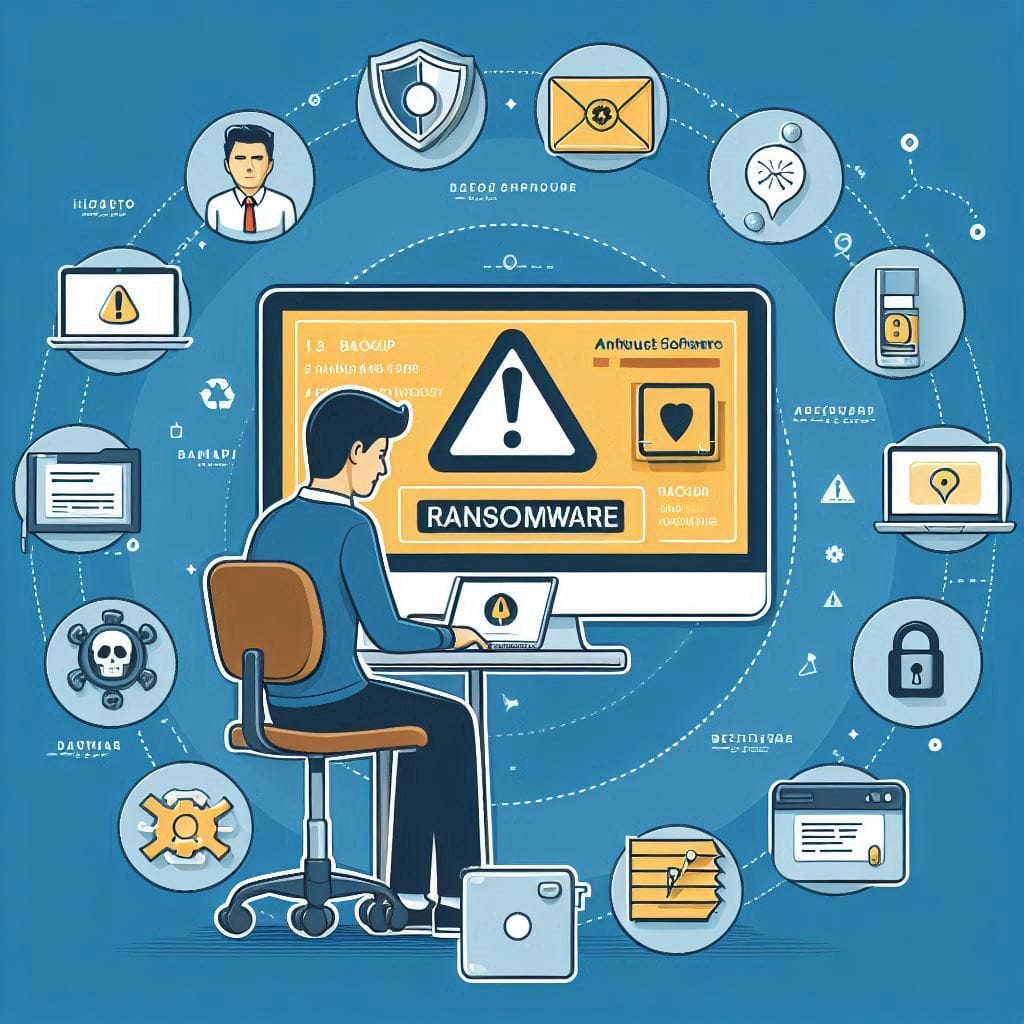How to Recover from a Ransomware Attack: 11 Proven Methods (2025 Expert Guide)
Let me start with a confession: I’ve seen firsthand how ransomware can cripple businesses. In 2025, these attacks aren’t just smarter—they’re relentless. But here’s the thing: recovery is possible. Whether you’re a small business owner or an IT professional, these 11 methods will guide you through the chaos.
- 1. Stay Calm and Isolate the Infection
- 2. Assess the Damage and Identify the Strain
- 3. Contact Law Enforcement and Cybersecurity Experts
- 4. Restore from Clean Backups
- 5. Use Decryption Tools (If Available)
- 6. Patch Vulnerabilities Immediately
- 7. Reset Credentials and Strengthen Authentication
- 8. Monitor for Lingering Threats
- 9. Communicate Transparently with Stakeholders
- 10. Conduct a Post-Attack Audit
- 11. Invest in Proactive Prevention for the Future
- Final Thoughts
1. Stay Calm and Isolate the Infection
Panic fuels mistakes. The moment you detect ransomware, disconnect infected devices from the network. Unplug Ethernet cables, disable Wi-Fi, and power down critical systems. I’ve watched clients lose entire servers because they hesitated here. Don’t let fear override logic.
Pro Tip: Label isolated devices with sticky notes—it sounds low-tech, but it prevents accidental reconnection.
2. Assess the Damage and Identify the Strain
Not all ransomware is created equal. Use tools like ID Ransomware to identify the variant. Is it LockBit 4.0 or a new AI-driven strain? Knowing this shapes your recovery strategy. Last year, a client avoided paying a $2M ransom because we recognized a decryption tool existed.
3. Contact Law Enforcement and Cybersecurity Experts
Reporting the attack isn’t just about compliance—it’s about resources. Agencies like CISA (2025’s upgraded Cyber Incident Reporting Office) often provide free decryption keys. Partnering with a certified incident response team accelerates recovery. Trust me, going solo here rarely ends well.
4. Restore from Clean Backups
If you’ve maintained offline, encrypted backups (you do have these, right?), now’s the time to deploy them. Test backups for integrity before restoring. One hospital I worked with lost weeks of data because their backups were silently corrupted.
Quick Check: Follow the 3-2-1 rule—3 copies, 2 formats, 1 offsite.
5. Use Decryption Tools (If Available)
Sites like No More Ransom offer free tools for strains like Phobos or WannaCry. In 2025, AI-powered decryptors can crack some newer variants. But beware: fake tools abound. Verify sources through official channels.
6. Patch Vulnerabilities Immediately
Ransomware exploits unpatched flaws. Update operating systems, firewalls, and legacy software. Automate patches where possible—human delays cost a logistics firm $800k last quarter.
7. Reset Credentials and Strengthen Authentication
Assume all passwords and API keys are compromised. Enforce MFA (Multi-Factor Authentication) and switch to phishing-resistant methods like FIDO2 keys. I’ve seen attackers linger in systems for months using stolen credentials.
8. Monitor for Lingering Threats
Advanced ransomware hides dormant payloads. Deploy EDR (Endpoint Detection and Response) tools to sniff out anomalies. One financial client found a secondary attack lurking in their HR system weeks later.
9. Communicate Transparently with Stakeholders
Silence breeds distrust. Inform employees, customers, and partners about the breach—without revealing tactical details. Draft templated responses in advance. Honesty preserved a tech startup’s reputation after a 2024 attack.
10. Conduct a Post-Attack Audit
Why did the breach succeed? Was it a phishing email? Outdated software? Hire a third-party auditor to dissect the incident. Turn their findings into a prevention roadmap.
11. Invest in Proactive Prevention for the Future
Recovery is reactive. Prevention is power. In 2025, AI-driven threat hunting and zero-trust architectures are non-negotiable. Train employees with simulated phishing drills. Budget for cybersecurity like your business depends on it—because it does.
Final Thoughts
Recovering from a ransomware attack is grueling, but not impossible. I’ve walked clients through this nightmare, and the ones who succeed combine speed, expertise, and transparency. Start with isolation, lean on experts, and rebuild smarter.
Remember: The best defense is a layered strategy. Don’t wait for the next attack to tighten your safeguards.
